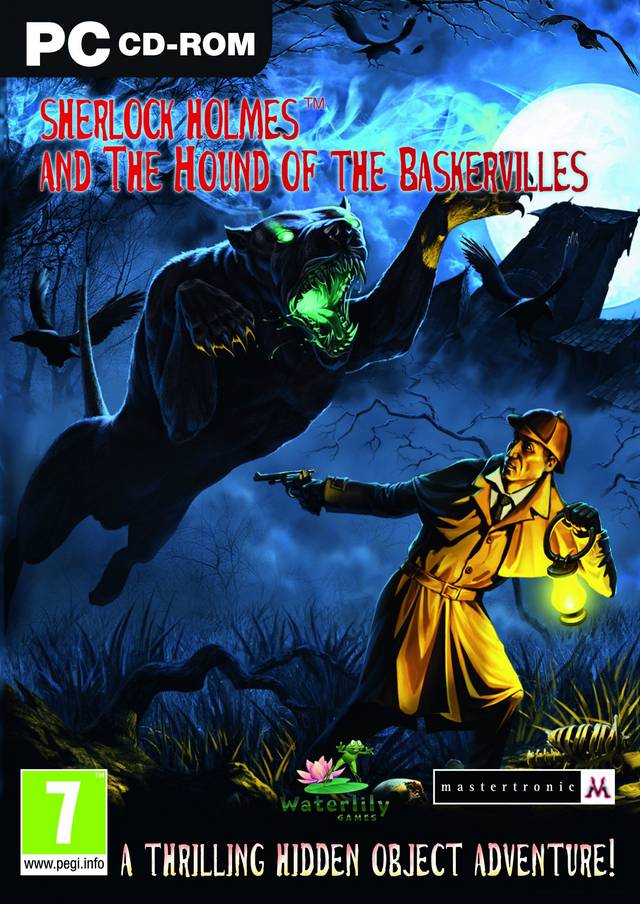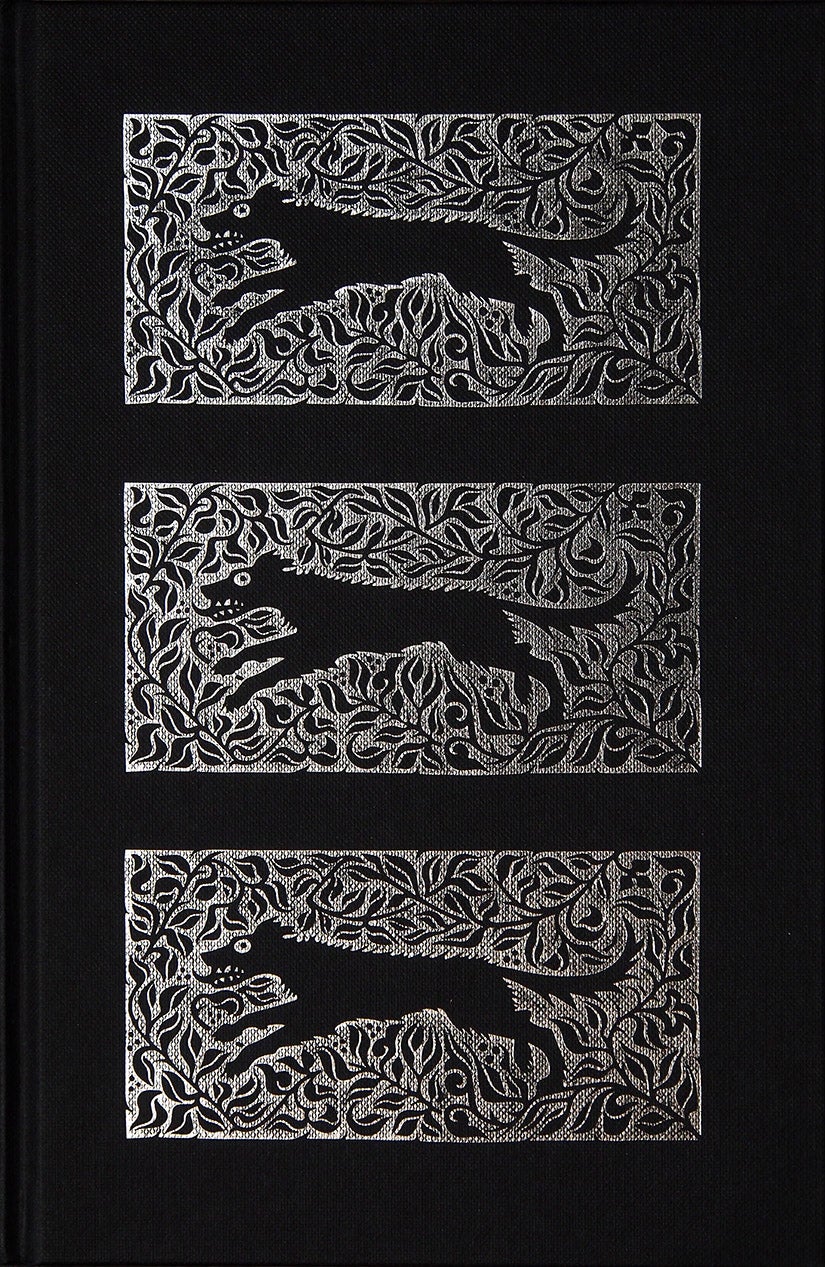You walk on, trying to shrug it off, but every time you look back, it’s there. Fear begins to creep in and you quicken your pace. You’re nearly running when you reach your destination and, in a rush of courage, spin to confront your pursuer. But it’s gone, vanished. “Oh, yeah,” one of the locals later tells you, completely unsurprised. “You’ve just seen a black dog.” Black dogs have been seen all over England for hundreds of years. The earliest written account comes from 892AD, from a document called the Anglo Saxon Chronicle, which talks of “huge and hideous” huntsmen “on black horses and on black he-goats, and their hounds were jet black with eyes like saucers and horrible”. They’re usually described as being big, shaggy dogs the size of calves, with large, saucer-like eyes. Sometimes those eyes are red, sometimes they’re flaming, and sometimes there’s only one eye in the middle of the head. It all depends on the story and the storyteller, and probably how much they’ve had to drink. Though black dogs are by no means exclusive to our little island - there are sightings and accounts of spectral black dogs all over the world - they have found a way to inspire writers here and weave their way permanently into the fabric of the land. Ever come across the Sherlock Holmes story the Hound of the Baskervilles, for example? It’s inspired by black dog folklore. There’s no specific legend it was pulled from, but Arthur Conan Doyle was inspired by a friend’s tales of spectral Dartmoor hounds, prompting him to visit and dig around for more. And it just so happened the name of the coach driver ferrying him around was Baskerville! Ever wondered why Dracula turns into a black dog? Wonder no more! Bram Stoker lifted the idea almost one-for-one from a Whitby legend of a ship run aground, mysteriously carrying crates of earth, and from it, a huge black dog - presumed spectral - leapt. Time wrote a wonderful piece about it. Or how about the Padfoot storyline in Harry Potter and the Prisoner of Azkaban (my favourite of the books)? Padfoot is the name associated with spectral dogs in Yorkshire, and their being a grave omen is, yep, another common feature. What’s more, Sirius is the name of the Dog Star, and there’s even a tale from Suffolk about a black dog shapeshifter. It’s a bit sinister but I’m going to tell it anyway, or retell it as the case may always be with folklore. I don’t know what year the story is from, because I lifted it from a wonderful book I’ll tell you about in a moment, and the book doesn’t say, but the story tells of an Italian traveller whose arrival here coincided with sightings of a mysterious black dog. Oooooh. A boy goes on to befriend the dog and they become inseparable, as dogs and children are wont to do. Eventually, it comes time for the Italian to leave, and as he prepares to do so, he asks the boy if he’ll come with him. But the boy, being a sensible lad, declines, and so the Italian asks him if he can look after the dog instead. Naturally, the boy agrees, and everything is harmonious for a while. Then one day the boy goes swimming, and when he tries to swim back to shore, the dog won’t let him. The dog barks and snarls and drives him back. Panicking, the boy looks in desperation at his furry friend, and it’s then he sees not the face of the creature he knows, but the smiling face of the Italian man. (The boy is OK in the end, by the way - a fishing boat picks him up.) Creepy, isn’t it? The book I mentioned, from which I pinched these stories - and much more - is Black Dog Folklore by Mark Norman. It seems to be, comfortably, an authority on a topic that’s notoriously hard to pin down. Notorious because, well, how do you pin folklore down? It’s something that lives in the retelling, in the embellishments, and in the reactions from the crowd. How do you track something like that, something alive, back to a beginning, let alone work out whether it’s true or false? The truth is, you don’t. You concern yourself with how the stories have been passed on instead, and what that says about the communities telling them. So, over the course of some 750 eyewitness accounts, that’s what Mark Norman does. He relays incredible stories like the one about Lady Howard of Fitzford Tavistock in Devon who, every night, is said to ride out on a ghostly carriage adorned with the heads of her four dead husbands. And should she overtake you on the road, she will apparently swing the door open and beckon you in. And it’s advised you don’t take her up on the offer. He touches on the 2014 discovery of the massive dog skeleton dug up in Leiston Abbey, Suffolk, which a local newspaper reported fairly reliably on before the Daily Mail came swaggering and spun it into a headline with “SEVEN FOOT” and “flaming eyes” in. Yes it’s misleading and sensationalised, but it gives people, arguably, what they want: a ghost story. A story like the Italian shapeshifter. Something to tell over a campfire at night, particularly when camping anywhere near Leiston Abbey. I know that because that’s what I want. It’s why I bought the Black Dog Folklore book in the first place. I want to know ghost stories and supernatural tales are still alive in Britain, and that if I walk down a country lane one evening, I might see a vision from hell, and I’m not talking about a new bypass. What I wasn’t entirely prepared for was the other side of black dog folklore, not so commonly reported: black dogs as protectors. Mark Norman notes that reports of this kind are as frequent as any sinister one, and that there are chunks of England which consider the black dogs as friends, not foes. Some mothers apparently used to assume their children safe while playing, because they were under the watchful eye of the local black dog! These protective dogs seem to appear out of nowhere to follow a person on their journey, warding off dodgy onlookers on the way. There’s an account of some men being put off pursuing a lady because of the beast walking nearby, and a woman who would have likely been robbed were it not for the big black dog padding alongside. And in nearly all of the accounts, the protected party seems overcome with a sense of serene safety, not fear. It’s a nice reminder, I think, that the truth is often kinder than we’re led to believe. What I would like, then, is someone to package all of that old magic up, all of that superstition and folklore, and pour it into a game. The Witcher 3: Wild Hunt did it exceptionally with Slavic folklore, after all, so why not old English magic? The kind of magic you can feel in Susanna Clarke’s wonderful book Jonathan Strange & Mr Norrell: a place of roads to other lands and forgotten legends. Because, as in that book, it feels like people have forgotten, like magic has slowly drifted out of our collective consciousness, bullied away by the noise and advances of modern society. But it’s right there, if you want to see it, with saucer-like eyes and a black, shaggy coat.

